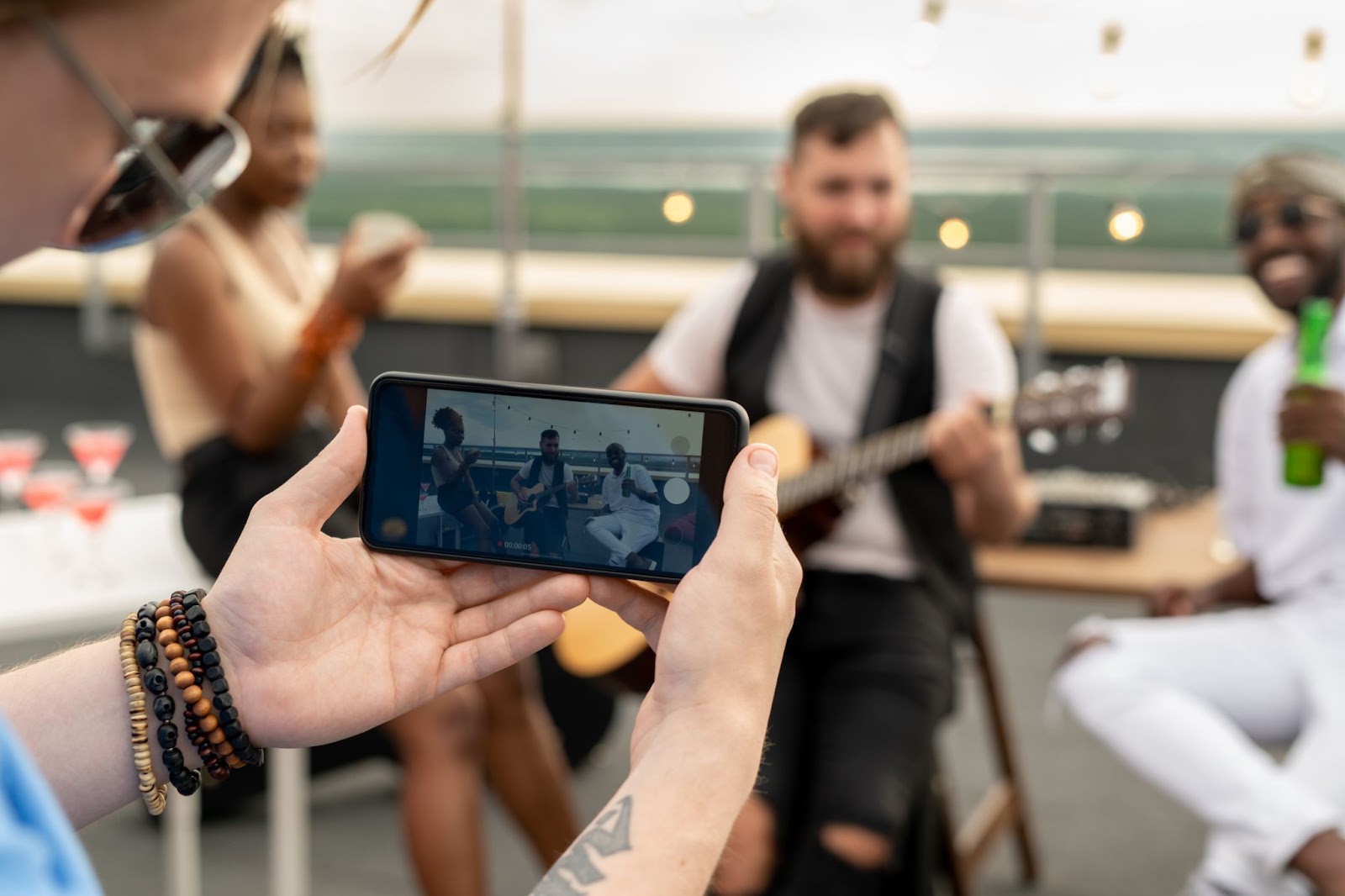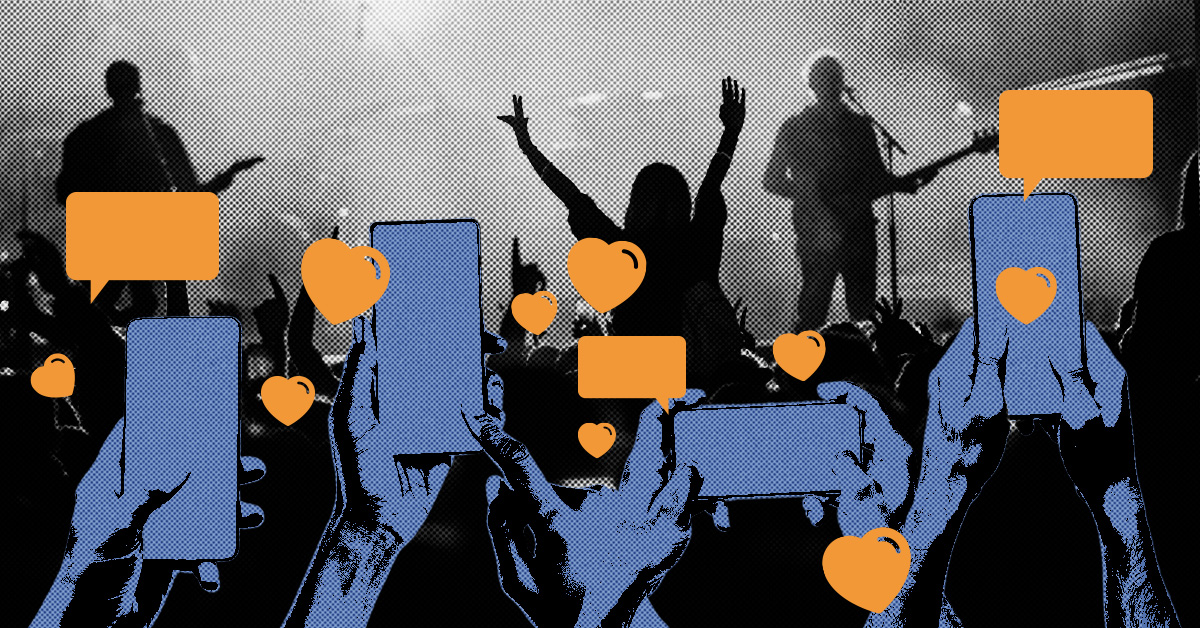You write the song. You fine-tune the mix, obsess over the release date, and craft the perfect caption. You upload to all the platforms, schedule a post for every time zone, drop it in your story, text your group chat, maybe even run a few ads.
And then you wait.
A couple of likes roll in. Maybe a comment from your cousin. A few fire emojis from someone you went to high school with. But outside of that, it’s mostly quiet.
It’s the kind of silence that makes you wonder if anyone’s actually listening. You start questioning everything. Is the algorithm hiding me? Should I have used different hashtags? Maybe I’m just not built for this. That inner voice gets louder every time the numbers don’t match the effort.
It’s frustrating. It’s discouraging. And worst of all, it’s common. Because while the internet makes music more accessible than ever, true connection is a different story. And if you’ve ever felt like you’re doing everything right but still falling flat, you’re not alone.
Let’s talk about why.
The Truth About Going Viral
We’ve all seen it happen. An artist posts a raw snippet of a song on TikTok, it explodes overnight, and suddenly they’re topping Spotify playlists, getting label interest, and booking late-night shows.
It’s hard not to want that, but “going viral” is not a sustainable marketing strategy. Most of the time online virality is pure luck, and what you do with that 15 minutes of fame is what matters way more than the viral moment itself.
Take someone like Addison Rae. She found her initial success on TikTok, but what made her music career even remotely viable was the time she spent away from the app. She took the time to rebrand beyond being a social media star in order to build a lasting fanbase for her music. That didn’t happen by accident. It happened by design.
Going viral might introduce people to your name. But it doesn’t guarantee they’ll care about the next thing you post, or even remember you tomorrow.
That’s because real growth doesn’t come from exposure. It comes from repetition. From showing up, over and over, in a way that feels honest. From building something so rooted in your identity that it’s undeniable to the people who need to hear it.
TikTok is still a powerful discovery tool: 84% of songs that entered the Billboard Global 200 in 2024 went viral on TikTok first (TikTok Music Impact Report, 2024). However, discovery is just the beginning. What happens after fans find you is what makes or breaks a career.

Your Music Isn’t for Everyone, and That’s a Good Thing
Who are you really making music for? It’s tempting to say, “everyone.” But the moment you try to reach everyone, you end up connecting with no one.
So let’s reframe it: Who is this song for? What kind of person is listening at 1 AM with headphones in, trying to process their week? What kind of person plays your track during a long drive or puts it in the background while they paint?
The more clearly you can picture that person, the more naturally your content, your tone, and your presence will align.
Marketing writer Kevin Kelly coined the idea of “1,000 True Fans”: the notion that any creator can sustain a career by building a small but passionate group of supporters. These are not casual listeners. They’re your core. And once you know who you’re talking to, it becomes easier to create for them instead of the algorithm.
Finding Your Superfans
Luminate’s 2023 Midyear Music Report defines superfans as fans that engage with artists and their content in 5+ ways. Superfans are not just people who listen. They’re the ones who show up. They come to your gigs. They buy your merch. And they’ve already streamed your new song at least a hundred times. They tag you in their stories. They evangelize.
That same report from Luminate also details that superfans spend 80% more per month on music activities than the average music listener. However, their value isn’t just in their spending. One superfan telling ten friends is more valuable than a thousand people skipping your track after the first ten seconds.
But here’s the catch: they can spot inauthenticity a mile away. You don’t gain superfans by selling harder. You gain them by being yourself.
Treat your biggest fans like people, not paychecks. Don’t just drop links to songs and merch, drop them a “thank you” DM. Don’t just promote at your audience; converse with them. That’s how loyalty is built.

Social Media Was Never Supposed to Be a Megaphone
A lot of artists use social media like a flyer. “New song out now!” “Pre-save link!” “Watch the video!” And sure, you need to promote. But if the only time people hear from you is when you want something from them, don’t be surprised when they tune out.
Social media works best when it feels personal. Just ask Poolhouse, an indie rock band from Utah.
They posted a TikTok featuring their song “Could Be Love.” It didn’t take off immediately. But then a creator named Rachel Ruff Cuyler made her own video offering a few edits: “This could be the next Teenage Dirtbag if we fix it.” Her version wasn’t a takedown. It was thoughtful, constructive, and rooted in genuine appreciation for the band.
Instead of brushing it off, Poolhouse embraced Rachel’s ideas. They reworked the track into “Could Be Love (Rachel’s Version),” gave her a credit on the song, and even flew her out to be in the music video. The result? Their monthly listeners jumped from under 10,000 to over 200,000, and more importantly, they gained an engaged fanbase.
We’re not suggesting that you need to make a new version of your song every time a fan wants to change something. But engaging with the people who show an interest in your music will make them stick around, and maybe bring in a few more potential fans with them.
That’s what social media can do when you stop broadcasting and start connecting. Show the rough drafts. Respond to comments. Let your fans into the process. Make them feel like they’re a part of something.
Build the Room They Want to Stay In
There’s a big difference between having followers and having fans who talk to each other.
When you create a space; whether it’s a Discord server, a Close Friends story circle, a private Instagram page, or even just a group chat for your top supporters; you’re building a world. One where your fans feel seen, connected, and valued. One where your music becomes part of their identity.
This is how artists create movements, not just moments. When fans feel a sense of community, they’ll stick around for much longer.
Slow Growth Is Still Growth
It might feel like everyone else is blowing up overnight. But for most artists, growth is slow. Quiet. Invisible at first. Until one day you realize you’re not shouting into the void anymore. You’re talking to your people.
The DM that says “this song got me through a rough week.” The comment that says “I feel like you’re writing about my life.” The person who drives two hours to see your gig.
That’s real. That’s the kind of foundation you can actually build on.
So no—you don’t need millions. You need the right ones. And if you keep showing up, keep being human, keep speaking to the person behind the screen instead of the algorithm, those right ones will find you.
Let’s Build Something Real
Need help identifying your audience and building your strategy around real connection? That’s exactly what we do. Whether you’re releasing your first single or nurturing a growing fanbase, we can help you build something that lasts.

